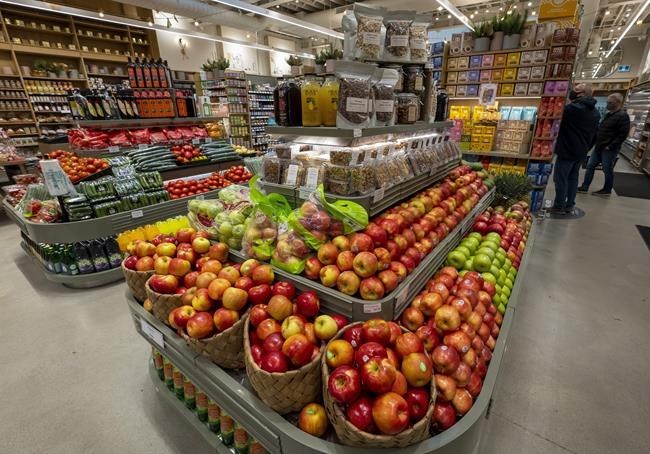Canadians can’t seem to catch a break at the grocery store as food prices continue to soar. Statistics Canada reported Wednesday that food prices rose 7.4 per cent in February compared with a year ago. The rise came as the annual inflation rate climbed to 5.7 per cent, the highest it’s been since 1991.
While some economists forecast a slowdown in inflation in the back half of the year, there is more price pressure to come before we get there.
"Unfortunately, we’re likely to see further acceleration in inflation in March," says Josh Nye, senior economist at RBC.
Statistics Canada also highlighted dairy products in the consumer price index release because they were one of the biggest contributors to February's price gains. The rise in the price of dairy products can partly be attributed to the Canadian Dairy Commission’s decision to increase the farm gate milk price by six cents per litre on Feb. 1.
Here's a breakdown of how much the prices for some popular food items rose between February 2021 and February 2022:
Milk: 6.6 per cent
Eggs: 7.2 per cent
Chicken: 10.4 per cent
Beef: 16.8 per cent
Bacon: 16.1 per cent
Apples: 5.3 per cent
Oranges: 9.4 per cent
Bananas: 3.7 per cent
Other fresh fruit and vegetables: 3.8 per cent
Bread, rolls, buns: 3.7 per cent
Coffee: 8.5 per cent
Nut butter: 5.6 per cent
Potato chips and other snacks: 5.8 per cent
Beer purchased from stores: 3.6 per cent
Wine purchased from stores: 2.1 per cent
Liquor purchased from stores: 1.0 per cent
Baby food: 4.3 per cent
Delivery app services (includes delivery from grocery stores and restaurants): 1.4 per cent
— With files from Jordan Press in Ottawa.
This report by The Canadian Press was first published March 16, 2022.
Adena Ali, The Canadian Press



